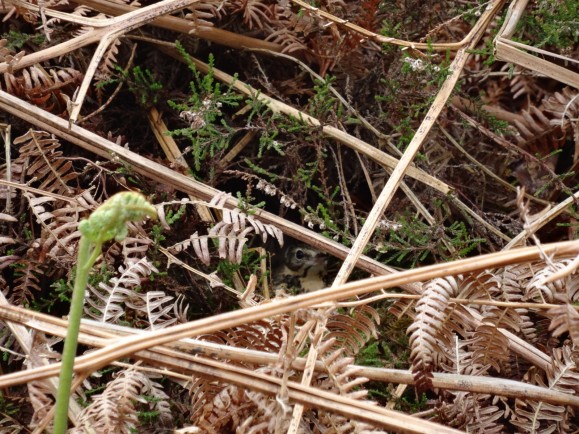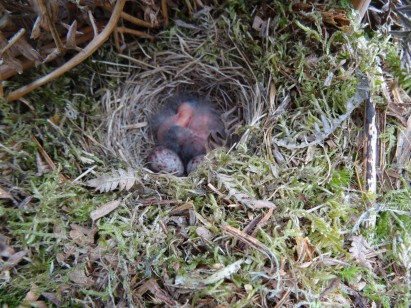Summary
The breeding success of Stonechats on Dersingham Bog in recent years has taken us all by surprise, starting off with barely 3 pairs and now reaching 15 occupied territories in 2017. This has resulted in a staggering 51 juveniles ringed from 10 pairs in 2015 and 95 in 2016 and 113 chicks ringed in 2017 from 15 territories. It’s tempting to view this as being almost saturation point for the reserve and there’s no room for any more pairs, but we thought that in 2015 and they surprised us!
The number of pairs dropped in 2018 to 6 pairs following the double blow of the Beasts from the East but numbers began recovering in 2019 with 10 pairs. 51 juveniles fledged in 2018 and 61 in 2019 so hopefully numbers are on the up again.
 Given that Stonechats have always been viewed as a scarce breeding species in Norfolk, their success on the reserve is a very positive step. We can only hope that Dersingham Bog continues to act as a nursery for the recolonisation of more of the Norfolk coast. Although we are conscious that the recent spell of mild winters has played a role in the adults’ survival and the picture could change very rapidly if we experience another harsh winter, as happened during the winter of 2017/18 when the two Beasts from the East devastated our numbers.
Given that Stonechats have always been viewed as a scarce breeding species in Norfolk, their success on the reserve is a very positive step. We can only hope that Dersingham Bog continues to act as a nursery for the recolonisation of more of the Norfolk coast. Although we are conscious that the recent spell of mild winters has played a role in the adults’ survival and the picture could change very rapidly if we experience another harsh winter, as happened during the winter of 2017/18 when the two Beasts from the East devastated our numbers.
The project has already proved its worth in a relatively short space of time. Close observations of the breeding pairs throughout recent seasons has revealed some fascinating insights into the species already, which we’d have been blissfully unaware of, or we’d have drawn the wrong conclusions if the birds hadn’t been colour ringed.
 We’ll cover some of the more interesting stories on the Blog and About Stonechats pages in more detail but in brief, the ringing project has helped to reveal the site fidelity of several adults, how some partners swap both territory and mate in mid season, and how some adults move some distance between nesting attempts. And as the territories are relatively close together, in some instances within 50 yards, having colour-ringed birds also allows us to be fairly certain when we’ve got new pairs and what we’re seeing is not just the neighbours roaming more widely.
We’ll cover some of the more interesting stories on the Blog and About Stonechats pages in more detail but in brief, the ringing project has helped to reveal the site fidelity of several adults, how some partners swap both territory and mate in mid season, and how some adults move some distance between nesting attempts. And as the territories are relatively close together, in some instances within 50 yards, having colour-ringed birds also allows us to be fairly certain when we’ve got new pairs and what we’re seeing is not just the neighbours roaming more widely.
Numbers in more detail
Before the start of the ringing project, Dersingham Bog had already played host to two colour ringed Stonechats, one during the winter of 2010, another in 2011, with a third bird recorded in 2013 which subsequently went on to breed on the re serve.
serve.
These birds had an interesting history as they were all ringed on the North Norfolk coast, which implies there is a definite movement of birds from the coast to Dersingham Bog to breed and then returning to the coastal area to winter.
In 2012 nest monitoring began in earnest and in the first year of ringing, 3 Stonechat nests were found, with all of them being successful, producing 10 young, although two of them did not have full broods.
In 2013 the project continued and, in addition, we were able to liaise with local ringers at Snettisham coastal park to ring the young of a nest there, with the hope of further understanding the movements of Stonechat in the local area.
In total, 2 Stonechat pairs were successful on Dersingham Bog, raising and fledging a total of 10 chicks and the nest at Snettisham Coastal Park raised a further 4. One pair of Stonechats seemed to have a torrid year, with the first nest laying a small clutch of 3 eggs which failed and the second attempt was also 3 eggs, with eventually 1 egg being left in the nest which again failed. Thoughts on this pair were that the bird was either an immature bird or that there were some fertility issues. 
2014 was a bit of a strange year in terms of nest finding success. 3 Stonechat nests were found out of 5 pairs but only 5 chicks were colour ringed. One nest was found just after the chicks had fledged and the young birds were watched fledging from the nest from the nearby track. One of the other nests unfortunately failed at the chick stage and looked to be predated.
Sightings of colour ringed birds continued to trickle in over the year, with the vast majority being seen on Dersingham Bog itself. Of note though were sightings of 2 of 2013’s Stonechat Pulli, which were both seen as separate pairs on Roydon Common NNR. They were first seen in the winter and have stayed on that site ever since.

2015 was a much better year for nest finding with considerable success. The numbers of Stonechat territories on the reserve doubled with 10 pairs recorded, which also meant that the amount of monitoring effort also doubled. In total, 18 nests were found and the massive number of 51 nestlings were colour ringed. This was more than the total ringed in 2012, 2013 and 2014 combined. We also managed to recapture a male bird that was previously ringed in 2013.
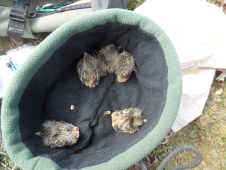 2016 managed to surpass even 2015’s figures, with an amazing 95 nestlings colour ringed, from 25 nests in 13 territories. 30 nests were found in total, which included 5 known failures. It was almost a ‘full house’ with every Stonechat nesting attempt being found bar one – a late found 1st brood of already fledged young from an unknown pair in an isolated part of the reserve. 8 juveniles from the 2015 broods returned to their natal site to pair with adults already on territory or set up in new pairs, which must have contributed to the success this year.
2016 managed to surpass even 2015’s figures, with an amazing 95 nestlings colour ringed, from 25 nests in 13 territories. 30 nests were found in total, which included 5 known failures. It was almost a ‘full house’ with every Stonechat nesting attempt being found bar one – a late found 1st brood of already fledged young from an unknown pair in an isolated part of the reserve. 8 juveniles from the 2015 broods returned to their natal site to pair with adults already on territory or set up in new pairs, which must have contributed to the success this year.
2017 has been an astonishingly successful year and for the first time in the project’s history, we passed the ‘century’ mark, with 113 juveniles ringed from 33 nests in 15 territories. This is despite bad weather scuppering 50% of our Stonechat’s first breeding attempts, but our pairs were more successful for the rest of the season, helped by better weather. We also missed finding 2 nests so we can add another 8 fledged youngsters minimum to that 113 total. A blog detailing the 2017 season in more detail can be read here.
2018 was a less successful year as the Stonechat population on the reserve, and nationwide, was affected by the double blow of two Beasts from the East in late winter. So from a high in the previous year, we had 6 pairs producing 51 chicks, which is still a respectable total given that even the pairs which survived weren’t in the best of breeding condition.
2019 saw the beginnings of a recovery, with our numbers up to 10 pairs which produced 61 chicks. The year wasn’t totally without incident though as bad weather in June wiped out our second broods entirely and we lost 47 chicks in one week. If they had survived, we’d have been on course for our second highest total ever. We can only hope that our Stonechat population continues to recover for 2020.
Movements
The value of the colour ringing project also became apparent with what it revealed about some fascinating inter-site movements. A Stonechat ringed at Dersingham Bog was seen at the Stanta training ground in Thetford Forest, a movement of 40km to the south east. A bird ringed at Snettisham Coastal Park was subsequently seen at Holme Bird Observatory. Birds seen at Dersingham Bog so far have originated from Kelling Heath, Weybourne and Mundford. Ringed Stonechats from our project have also been sighted this year as far afield as Winterton on the east coast of Norfolk, have bred on the Suffolk coast and seen inland as far as Cambridgeshire.
Our most remarkable movement has been a sighting of a male in Jumilla, Murcia in SE Spain, and was our first sighting reported outside the UK. It was born in 2019 in a first brood on one of our core territories. We thank Toni Ortuno for taking the time to report this bird and for the photographs.

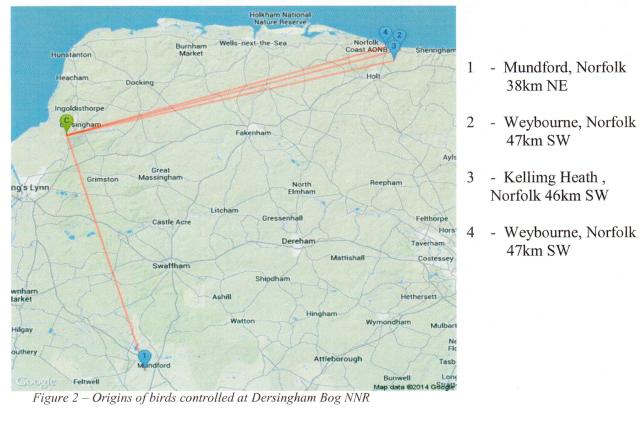
Other Stonechat colour ringing projects
At Kelling Heath, the project to colour ring Stonechats began in 2009 and was extended to include Weybourne Camp in 2010. After a succession of harsh winters and no proven breeding on Kelling Heath in 2013 and 2014, that project was brought to an end. It is therefore very heartening that the population and breeding success at Dersingham Bog continues to increase so we can continue the species monitoring and ringing for Stonechats.
Results for other species surveyed at Dersingham Bog
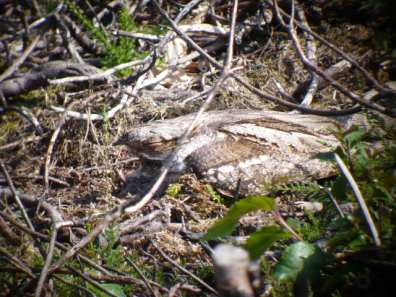 Nightjar breeding pairs on the reserve generally number between 16 – 20, with a high of 28 churring males in 2003. More recently, numbers have dropped slightly, with 12 churring males in both 2012 and 2013. Numbers increased for 2014 with 18 males recorded with 21 nests with 17 young in 2015 and 18-20 churring males in 2016. 2018 saw 25 males holding territory and 23 nests were found. In 2019 23 churring males were on site, with a minimum of 16 pairs. 22 nests were found, with 14 first broods and 8 second broods and a total of 30 chicks, and we began ringing Nightjar chicks again for the 2019 season. A more detailed account of our 2019 season can be found here
Nightjar breeding pairs on the reserve generally number between 16 – 20, with a high of 28 churring males in 2003. More recently, numbers have dropped slightly, with 12 churring males in both 2012 and 2013. Numbers increased for 2014 with 18 males recorded with 21 nests with 17 young in 2015 and 18-20 churring males in 2016. 2018 saw 25 males holding territory and 23 nests were found. In 2019 23 churring males were on site, with a minimum of 16 pairs. 22 nests were found, with 14 first broods and 8 second broods and a total of 30 chicks, and we began ringing Nightjar chicks again for the 2019 season. A more detailed account of our 2019 season can be found here

Woodlark has stayed fairly stable with an average of 3 pairs a year, with the first pair being recorded in 1996 and 4 pairs were recorded in 2013. This increased to 5 in 2014 and 6 in 2015.
Tree Pipits are bucking the national trend at Dersingham Bog and have shown steady increases over the last few years. In 2014 there were 11 pairs and 10 pairs in 2015. During this year, Tree Pipit were added to the list of species to study and 2 Tree pipit nests were found. One of these unfortunately failed but 1 nest successfully fledged 2 colour ringed young.
